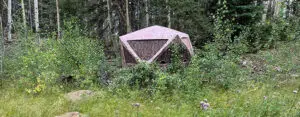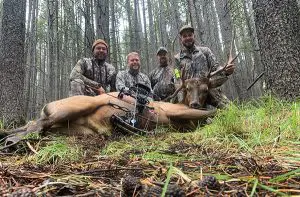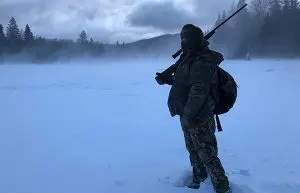By Joe Giglia
An elk hunting story about two men’s “Trophy” elk hunt and how each of us can overcome to create the memories of a lifetime.
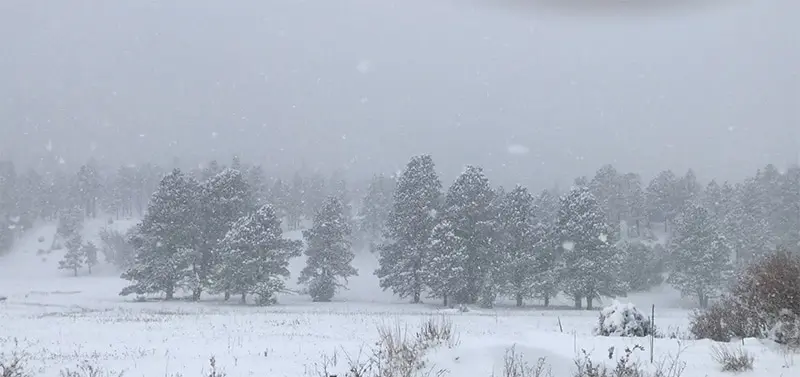
The one tough thing about my guide season is that I spend so much time in the mountains that it’s really tough to spend any time in the digital world. Keeping the Blue Collar Elk Hunting podcast going is my top priority and that in itself has been a logistical miracle, lol. The great thing about my time guiding however, is that it really gets the juices going and I am always coming across things that I can’t wait to share with you!
When it comes to my guiding, I would love to share a ton of photos and names with you, because I absolutely love some of the folks that I have shared so many memories. But for a lot of them, those on my main ranch, I have to stay away from faces or names because of client confidentiality. But the stories…oh man, the stories and lessons and things I want to share to help each of you are the best part. Hopefully, there are a few tidbits here for you to gain or learn something as well, as I am always coaching while I am guiding.
Each of you know that my main focus is bowhunting. I am a lifelong bowhunter and I don’t even own a big game rifle. With that said, it really has been guiding the rifle hunts that has given me the full picture of an elks life cycle, needs, modes and behaviors. In order to understand their level of focus at the time you are hunting them, it is so important to understand the mode or focus they have just come from, what mode they are currently and where that mode or focus will be going. Especially when you are hunting those transition periods.
But those focuses and transitions are for another time. Today I want to share some of the thoughts and points from my last outing. One of the funnest and most epic hunts I have had the pleasure to guide. And it was not an archery hunt. It was not even a trophy bull hunt. It was a cow elk rifle hunt!
So what made this hunt so special? So many things on SO many levels that I want to share with you. I hope to give them the justice they deserve.
As I said before, this was a cow elk hunt and I was guiding two hunters. Both great guys. Both in their sixties. One on the front side of sixty and the other with that seventieth year right there in the front windshield.
The younger of the two buddies, let’s call him Jim, was a first time elk hunter and was extremely nervous about the hunt. But in a good way as far as I was concerned. Jim told me he was nervous because he just didn’t want to mess up. His greatest nightmare was if he wounded the animal, not putting the bullet in the correct place. He just was not sure about shot placement and thought his nerves would get the better of him when things got critical. During that moment of truth. I looked Jim in the eye and told him not to worry. He had come to the right place. That by the next morning, he would know EXACTLY what to do. In my own head, I noted we would have a conversation to get his head straight when the time was right as well.
Jim’s buddy, let’s call him Tom, had been on the ranch several times and was not new to hunting elk. He knew what to expect and had asked that his buddy be first up as shooter to insure that he got an opportunity to have the experience. That was way cool with me and made me smile. I love unselfishness and seeing solid friendships like that. I already like both these guys.
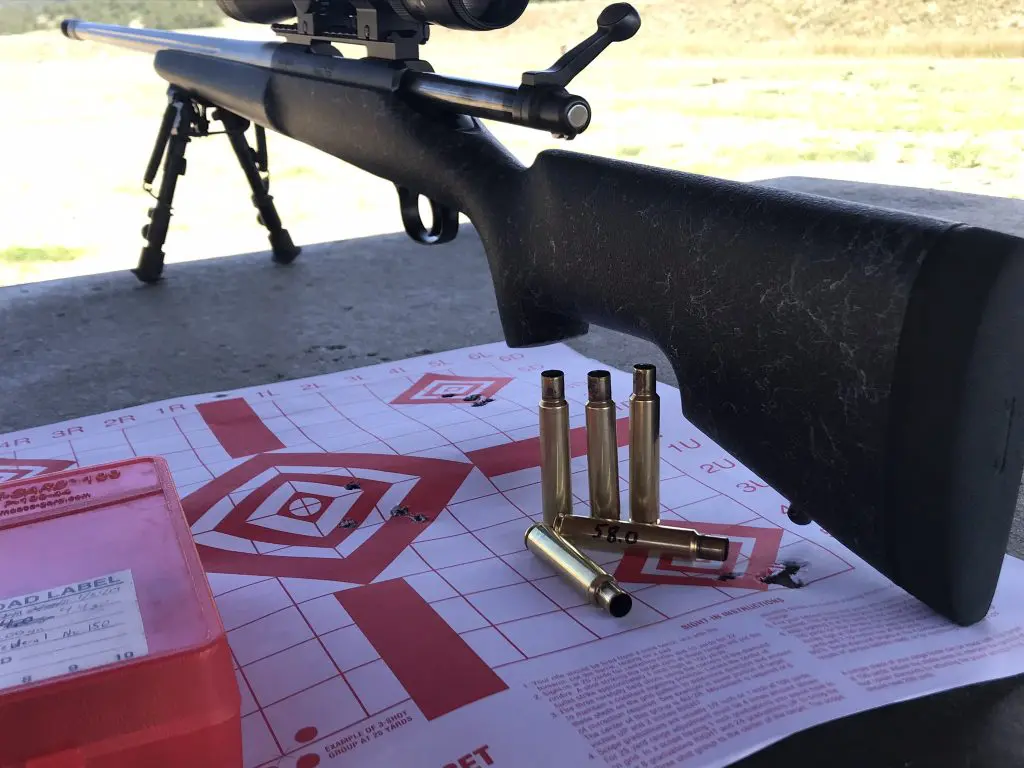
Before we ever hit the woods, I always take my guys to the shooting range. First to make sure they are on. Secondly to know what kind of shooter I have. How well do they know their weapon? Do they look comfortable and confident in the shot process? How good of a shot are they? What is their comfort zone distance wise? Answering those questions will tell me a lot about what type of situations I need to put the hunter in for the best opportunity at a clean and quick kill. The strengths or weaknesses that they bring to the table. The more strengths they have, the more options I have as their guide when it comes to each encounter.
Tom was solid. Right on and ready. I felt shooting wise he was aces. His whole demeanor showed he was no stranger to his gun. Great rhythm, focus and execution.
Jim on the other hand, seemed a bit shaky. Though within the kill zone each time, there was not consistency. I then told Jim the same thing I tell any shooter whether an archer or a rifle hunter when it comes to shooting; relaxed breathing, deep breath, hold breath and squeeze. With the gun, the squeeze is like a handshake. Let the gun surprise you. For a bowhunter, the release is everything. Same thing; relaxed breathing, hold and release.
Right now, you are probably wondering how I know any of this regarding a gun, lol. A bowhunter that doesn’t even own a big game rifle? True, I don’t own a big game rifle. But I do come from a gun family and shooting a 22 at squirrels with deadly accuracy is something every southern boy, at least when I was young, took great pride. I am no stranger to shooting, trust me. Dove hunting was a religion. Bead, lead and squeeze. I do own both a 22 and a 12 gauge and I definitely know how to use them. After cueing Jim, the shooting was more consistent, but I still felt his slight crack of self doubt.
That evening, I had Jim watch our video on shot placement. For my rifle hunters, I want two things from them. First, to shoot lower third, right above the elbow. I mean RIGHT above. I want a heart shot. I believe a heart shot is the best way to put down an elk down as quick as possible with a rifle. Also, by shooting lower third, if my hunter shoots low, we have a clean miss or at the worst, a non lethal wound that an elk can recover from. If the shot is high, we get a double lung shot. Secondly, I want my hunter to understand shot angles. How to read the leg placement to identify how much an animal is quartering to or away and where to again place that shot for maximum effectiveness. If an elk is quartering away, it is the opposite leg that we use to line up our shot. I do not want my hunters to take that quartering to shot, unless they have a solid grasp of the anatomy. Again, a quartering to shot can be devastating. But as a guide, I want a more quickly identifiable and certain shot. Most definitely for a first timer.
On opening day of the hunt, after the guys got into the vehicle, it was time to make sure I reviewed a few things with my first shooter. My expectations as far as his gun and muzzle control; No bullet in the chamber until instructed, muzzle always in the air or down at the ground. Then I looked right at Jim and said “Listen to me…. when you have that elk in front of you you are going to get her in your scope and you are going to be perfectly calm. I’m telling you, you will be in a zone. You are going to place those crosshairs right in the kill zone and you are going to breath, hold and squeeze like you are shaking hands. Then, you will get ready for a second shot. And after you know that she is down… then you are going to fall apart… Trust me”.
I gave Jim a rhythm. He now knew how to finish. He knew what finishing looked like. A positive thought process that he would use when the time came. That in itself is the basis of confidence. Execution then comes into play. Little did he or I know, that in less than an hour from that conversation, we would both find out how well he would be able to execute.
First thing in the morning right out of the chute, Jim and I found ourselves on the top of a ridge trying to locate a small group of cows we had spotted, when I got a strong smell of elk coming from the opposite side of the ridge (Always hunt with your senses… eyes, nose, ears… even that sixth sense that tells you to do things at times). I figured they had dropped off the side into the wind to cross the grassy bottom of the drainage to the next ridge. So we took off down the side. Before clearing the trees at the bottom, I checked in both directions of the drainage. To the left, the drainage petered out into the trees and to the right, it opened up to a rolling park with 3 other finger ridges coming in from different angels and another eroded creek drainage running through it. That wasn’t all…a whole herd of elk were moving through it!
There must have been 30 cows and several bulls. I had just checked the yardage when I heard it and Jim said “They’re BUGLING!”. It was October 24th and we had bulls following cows and screaming! There had to have been a hot cow that had come in late estrus and she had set off a small rut in the area.
The elk were still 500 yards off, but moving around a corner that would allow us to get across the drainage and to a side. Then move ahead and drop into the creek drainage. Allowing us to use the terrain and approach basically unseen. The wind was perfect so as soon as we saw the bull that was trailing disappear behind the corner, we got after it.
We were halfway to the creek when all of a sudden there was a big bull that had come out from the same place the herd had and there we were in the wide open! We stopped dead in our tracks. The bull was heading away from us and luckily, he didn’t look back. Whew!
But he still had a ways to get to the corner and we still had a ways until the creek drainage. I told Jim to stay right behind me and move when I moved. Stop when I stop. The best time to move on an elk is when they are moving. It’s harder for them to notice movement because everything else is moving around them as well. It was so cool. There we were in the wide daggum open, under God and sky, following this huge bull as he walked and bugled at the herd that had just cleared the same route. I was smiling the whole time at the situation.
When he stopped, we stopped. When he moved, we moved. He was just about to clear the the same corner out of our sight when we dropped into the safety of the creek bottom. Not waisting any time, we moved up to where the creek had cut into the treed ridge finger. Where the herd was just above in another park and in front of us. Easily less than one hundred yards. We climbed out of the creek and up the pine needle covered steep cut, needing about twenty yards to get to the top. The scent of elk was as if we were right smack dab in the middle of them!
Before I ever top a ridge, I always move in real low and VERY SLOWLY raise my head up above the rise to get a slight view. The steepness of the ridge made it interesting, but the dirt was soft and pine needle covered so we moved pretty silently. Plus we were in the shadows. With the wind in our face, trees for cover and in the shadows, it was a perfect situation.
Once my eyes cleared the top, all I remember thinking was “Holy crap!”. There were 30 or so cows and about five bulls, with the closest only 50 yards away! The bulls were screaming and fighting right in front of me. I looked down at Jim and he said, “Do you hear that!”. I told him “Heck yeah! The whole herd is right here!”
I was just about to move him into position to be able to shoot over the rise when I saw two spikes coming our way from the herd. I was in total disbelief as one of the spikes drops down into the creek and is moving, making all kinds of noise, into the creek and coming right towards us. Y’all, that creek was only 5 yards below us and here comes this dumb spike. My mind was racing knowing that he was going to hit our scent pool any time and blow out of there. Possibly taking the whole herd with him.
Unbelievably, just as he caught our scent and turned to run back to the herd, two bulls exploded in a fight, clashing horns and sending elk jumping in several directions. The spike looked just like another elk startled from the clash! I’m watching all this go down when Jim says “Joe, to your right”. So I look to the right of the herd and I’m not sure what he’s seeing. “No Joe. HARD to your right!” Jim says. I look to my hard right and only 50 yards away is a cow elk stopped and staring our way, with some others trailing that had come through the same park as the earlier group and that lone bull. “Jim, turn and get on your butt with your knees up to rest your gun on” I whispered. Jim turned and had just got into position when the cow got nervous and began to run off. The one daggum time I don’t have a diaphragm call in my mouth, so I just threw out a quick mew with my voice, followed by a whistle.
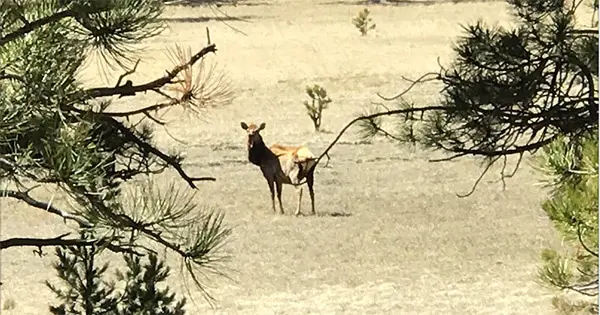
I have said it time and again, elk have a fatal flaw. When startled they will run a short ways and especially if you throw out a cow call, they will stop broadside to see what startled them. Thats exactly what she did. When she did, I whispered to Jim “Take her”. As he held his gun on her I whispered, “squeeeeeeze”. It was probably only seconds, but it seemed like an hour and I knew we only had seconds before she would bolt again, so I had just started to say “squeeeee..” BOOOOOM!
I saw her “hump up” and knew she was hit hard. Jim immediately racked another shot and as she ran in a death sprint he tried to get another one in her. It just lifted dirt behind her. After a fifty yard sprint, she did a 180 and ran to the exact spot she was first hit and dropped! With a third shot in the chamber, Jim still had his gun on her when I told him, “She’s down bud…GREAT JOB!”. At which Jim just laid backwards and had his “Oh my Gosh!” moment. And what a moment it was!
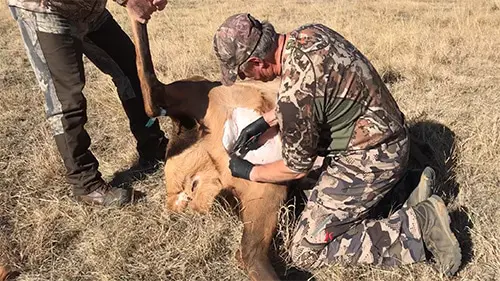
I want each and every one of you to know that the shot was just over 100 yards and when I had gutted the elk, Jim had executed a PERFECT heart shot! Just like a seasoned pro.
I’m here to tell you that seeing these two friends celebrating together. The genuine happiness and respect for each other and that of the animal. That is what it’s all about.
One down, one to go.
This was a three day hunt and after getting Jim’s elk back to the ranch, Tom had some awesome encounters through the morning of day 2 that just didn’t pan out. But that’s elk hunting. The problem at hand though, was a weather forecast that was calling for snow by 3pm later in day two. A BUNCH of snow.
Let me tell you y’all. I don’t always put a lot of stock into weather forecasters, but they hit this one on the head. Nailed it.
We were out for the afternoon hunt trying to get into our hunt area when the snow hit. At first, I chuckled and thought again to myself how the weather report was just another whiff. Just a few flakes here and there. However, we had just got on a herd and they had blown out before we could make a move and we were licking our wounds from that encounter when it really started coming down. We were in the truck when the temperature dropped to about 8 degrees and the rest of the “hunt” was spent trying to keep the windshield wipers from icing up so that we could see where we were going.
I had hopes of going to one spot before dark, but with snow the size of corn flakes pounding us, it became futile and we headed back to the ranch. Day two was over and the hope was that the snow would stop on day three which would have the elk moving like crazy. Well, that was the hope.
We woke up the morning of the last day to 2 degrees. There was over a foot of snow on the ground with snow still coming down. Hard.
The day had started the way the evening before ended. We could not even drive to get into an area without having to stop and clear the wipers every few minutes. My gloves would freeze to the metal on the wipers and the more my defrosters did their job melting the snow into water, the more ice that developed elsewhere to cause issues. The situation actually became dangerous. Knowing that every elk in the woods would be bedded until the snow storm lightened up or stopped, we were just spinning our wheels, literally.
I had dropped my hunters off at their room and told them to stay ready. That the moment the snow let up, we were heading out. Let me tell you, from the look on their faces and the way that snow was coming down, they all but figured the hunt was over.
I went to spend time with the other guides at the Game Barn and stay warm around the wood stove while we kept an eye on the snow. By noon, it was over 20 inches and still pounding. It didn’t look good.
But during a conversation with one of my buddies, I had found out that no one was hunting a section of the prairie property near my home town. Being about an hour and a half away with clear roads, I knew it would be a long shot, but the area at lower elevations weren’t getting the kind of snow we were in the mountains. I had never hunted this section before, but after talking to one of the other guides, I had a good idea about the possible areas we might be able to find some elk.
The problem wouldn’t be seeing them I was told. The problem is them seeing you first and heading to the next county. Well heck, it was better than sitting around watching the day disappear so I called my hunters and told them we were heading out.
Two hours later, we were pulling up to an overlook at the prairie to try and glass up some elk to be able to make a move. The snow was only 4 inches deep compared to the 20 inches up in the hills. But my heart fell when I got to the overlook only to find that with light snow still falling, visibility was horrible. I couldn’t see over 200 yards. Well y’all, plan ‘A’ was a dud. Guess plan B was up.
Plan ‘B’ was to move through the prairie in the truck and try to glass up some elk before they saw us. That was the idea, but for the first hour, it didn’t go so well. The visibility made anything 200 yards away look like shadows without form. The good thing was the elk weren’t going to see us. The bad thing was we couldn’t see them either!
One hour later after anxiously crossing a river and creeping and glassing the whole time, we began to gain elevation out of a river area towards a large lake partially surrounded by some trees and brush.
Only minutes later, unbelievably as if we were being rewarded for our effort, the snow quit falling and Jim yelled “THERE to the left!’ What we saw next took me a second to really comprehend. There was a line of elk running from our left to an area in front of us about a mile off. But the line kept going and going and going and GOING! By the time the herd had gathered up, still visible in a slight depression about a mile off in front of us, there had to have been 300 head or more! Unbelievable!
Through the binos I could see that once they all gathered up, they were looking back at something that must have spooked them because they weren’t looking our way at all. I started backing up the truck VERY slowly to let the rise in the terrain in front of us take us out of sight. With just the top of the elks heads visible, I stopped and looked at my BaseMap app to see if there was any possibility of a stalk. By looking at the satellite view, I had a great image of the area. I could see the lake with the trees and the brush in front of us as well as an irrigation ditch that ran from the lake just in front of where the elk looked to be. The problem with the satellite view was it just didn’t show the differences in terrain. I changed to the BaseMap topography layer and zoomed in. Perfect! The topo layer gave me an outstanding look at the lay of the land between us and the elk. I could see that from where we were, there was just enough rise for us to get to the lakeshore and move forward enough to drop right into the irrigation ditch.
One mile later, with the brush screening us from the herd some half mile away, Tom and I were moving into the irrigation ditch for the rest of the stalk. Man, it was perfect! Great walking in the bottom and it screened us perfectly. The wind was perfect too. We covered the next two hundred yards totally undetected and luckily I had cell service and was in communication with Jim, who still had eyes on the herd back at the truck and was giving me updates via cell messages. According to Jim, the herd was bedded and staying put for the time being.
It wasn’t minutes later that Jim texted that the herd was getting up and moving off. Dang it! As I topped out to peek over the side of the ditch, there was the herd. Still 400 yards out and moving away in a mass exodus. What had been a great stalk ended with us scratching our heads.
Tom looked at me and said that no matter what, after the stalk we had just done and the number of elk he had just seen, he had an incredible story. I looked at Tom and said “ I’m glad you think so bud, but it’s not over yet”.
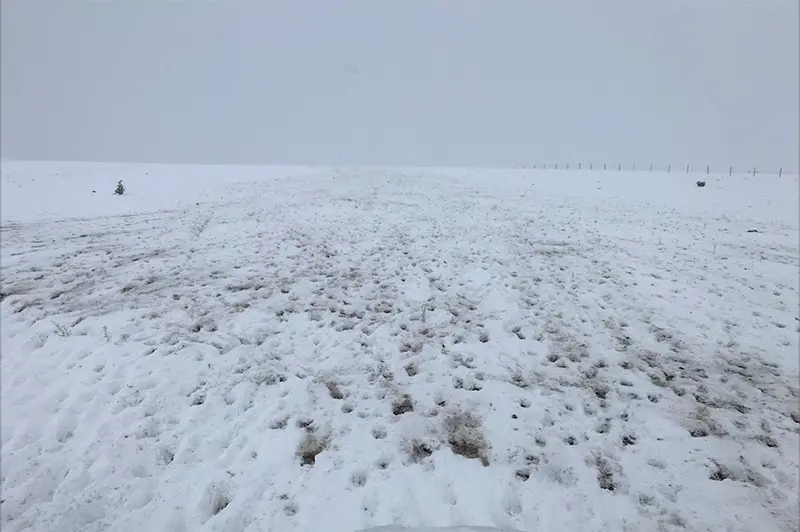
We still had daylight and you could see a fifty yard wide scar in the snow from the herds’ tracks, definitely heading in a solid direction until it disappeared over a rise in the terrain a couple miles off.
It was back to the topo map layer on my BaseMap app. Matching the direction of the herd with the detail on the map, I could definitely tell that the herd was headed into a depression that had possible water. With that in mind, I then identified a two track road that would get us close to the area with a rise between us, the wind in our favor and keep us hidden from the herd. So off we went.
Three miles later, I figured we should have been parallel with the herd. There was a two track that headed in that direction, but I wanted to use the lay of the land better, so I headed a little more north of the two track.
I would go ten or twenty feet towards the rise staying real low. Then I would slowly raise up until just my eyes were just above the rise to scan the area. I had repeated this several times until I was in position to see the whole depression on the other side. I raised up and nothing!
I was trying to figure out where in the heck they went when I looked more to my right… AND THERE THEY WERE! I could see the front of the herd, only 400 yards away, coming out of another drainage depression that kept the rest hidden. I immediately dropped down and ever so slowly backed up the way I came and headed to the truck.
Tom and Jim could tell immediately from my body language that I had spotted the herd. But when I got to the truck and told them that they were only 500 yards over the rise from the truck, Tom looked at me and asked “How are we going to get close to them?”. “We just go straight at them” I said with a completely straight face.
The two track that headed east would take us in the right direction and having eroded somewhat into the prairie, the raised sides and lower center would help us on our stalk. I told Tom to stay as low as I did and right behind me. Then I moved low until I spotted the ears of the front of the herd coming up out of the depression. At that point we were still 500 yards away. Turning to Tom I whispered, “How are your knees?”. Knowing Tom was 68 years old and a former athlete, I wasn’t sure if a long stalk while crawling on his knees was possible. He gave me the thumbs up and whispered, “I can do what I have to”. I took Tom’s gun from him to have it with me as I crawled. First for safety reasons and second to help him with the ordeal ahead.
As we crawled, through the low point in the eroded road I could see the backs of several cows and a bull in clear sight that was standing and facing directly away from us. Fortunately the bull was acting as a screen for the cows milling around and bedding on the other side of him. The raised sides above the road kept us hid from the main herd. With the wind still perfect we crawled forward through the wet snow and dirt. I was SO glad we both had put gloves on or it would have been miserable.
After crawling for what seemed forever, we slid into sitting on our butt so I could get a range on the visible elk. “385 yards” I told Tom. “I’m just not comfortable at that range” Tom replied. “You and me both bud. But we are going to have to belly crawl from here though” I whispered.
After crawling 150 yards already, I placed the rifle across my arms and Tom in position right behind me and we belly crawled foot after foot. At one point I looked back to check on Tom and still on his elbows, he raised both hands for me to stop. “You okay?” I whispered. With visibly labored breathing he whispered back “I just need a minute”. “No problem bud, take your time. We are getting closer and we have time” I said. “You got this”.
When Tom finally gave me the thumbs up, we were back at it. I’m telling you, crawling through that wet snow and dirt in 30 degree weather was no picnic. But I was thankful we weren’t in the 2 degree, breath freezing, finger numbing weather up on the mountain. But time was now becoming more critical with a little over an hour of daylight left and temperatures about to fall.
After crawling for several minutes, The elk in front of me were in clear view. Thankfully with the bull bedded now and still acting as a screen. But I was beginning to see heads above the sides of the road as well. Pulling my binos and rangefinder combo out of their now muddied up holder, I checked the range. “318 yards Tom” I again whispered. “I’m good with that Joe”. “Are you sure?” I asked. “You bet, I’m good with that” he reassured.
At that point I needed to get Tom into position and ready to shoot. Laying prone wasn’t going to work because it really limited his sight line. So, ever so slowly, I moved him up beside me while I stayed prone and had him slide into position on his butt. Then I moved in behind him to limit our exposure to the elk. From there I could range, glass and begin the hard task of finding a cow elk that was clear of any other elk behind them.
Tom tried getting into a shooting position by resting his elbows on his knees with his legs crossed. Way to uncomfortable and unstable. I suggested he spread his feet and raise his knees by bringing his feet more towards his butt. That way his knees became more stable for him to rest on. That seemed to do the trick. But still with his breathing labored, he just couldn’t stay on target. Each time we briefly had a cow clear, he couldn’t stay on her.
“Relax Tom, we have time” I said. “No rush bud”. Then I told him that I wanted his gun on safety and his finger off of the trigger. “What I want you to do is to put your crosshairs on that bull in front of us and we are going to practice getting locked on” I said. Then I told him “Now, I want you to take three normal breaths and then take a deep breath and hold it…then lock on.” “How did that feel?” I asked. “That’s good” as he gave me the thumbs up. “Okay then, keep relaxing your breathing and do it a few more times. We have plenty of time” I said. In fact, most of the herd was still bedded and finding a cow clear of animals behind them was real tough at the moment.
For the next half hour we tried to find a clear target. We now had a few cows under 300, but every time we had one clear, in only seconds she would move and have other animals bedded behind her. The whispered conversation for the next half hour went something like… ”Look five from the right Tom, Got a cow at 275.. wait..nope, too late. A bull moved in behind her”. “What about that one on the left Joe? Never mind, another cow just stepped in”. “Wait, Tom, there is one in the clear right next to that bull…HOLD UP..it’s a spike!”
It was well over 30 minutes with only about 30 minutes of shooting light left when I noticed that the bedded herd were beginning to get up and mill around. One particular cow moved well to the right and into the open with 3 bulls following. I didn’t want to stop her with a cow call and alert the whole herd, putting the whole situation into overdrive, so we let her walk. She slowly disappeared into a depression to our right with the bulls.
Looking back at the herd in front, they had started to feed directly to us! I started whispering the distance to Tom as they approached and we tried to again find a lone cow, “The cow on the left, is 250…. The middle group is 185”. Just as if it was deja-vu from day one with Jim, all of a sudden Tom says, “Joe, there’s a cow right here in the open on my right..do I take her?”
Right there, only abut 100 yards to our right, was the lead cow we saw only minutes before. She was now in the wide open with 3 bulls trailing a little behind her. Tom’s question was still in my ears “Do I take her?”… “YES” had barely left my lips and BOOOOOOOM!
It all happened in the last hour of the last day of the hunt. A day that most thought was over. We had gone to an area we had never hunted. Found 300 head of elk in the most unusual of places. Had a mile stalk go wrong for some reason, to only again follow and find the herd and finish with one of the most epic, wet, miserable and cold stalks ever. Crawling on hands and knees. Then on our belly in some of the toughest, flattest conditions possible. With the shot still ringing across what only fleeting seconds ago had been the dead silence of the snow covered terrain, I watched Tom’s cow take 5 steps and drop!
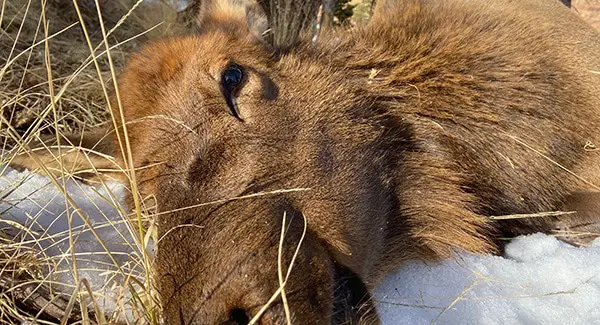
And guess what? When I gutted the cow and checked the vitals… another perfect heart shot! Wow! What a hunt!
I was the proudest guide in the nation at that point. Both my hunters had overcome, each in their own way, some kind of difficulty or obstacle that demanded them to reach down inside themselves and find both the physical and mental strength needed. Both had performed like champions!
Just… Wow! So cool.
There are a lot of things that I remember about different hunts. But for this one, I will never forget the words that Tom spoke on the ride back home. This is not word for word, but you will get the idea. Tom, with a look in his eye that I could only categorize as..thankfulness, he said..”At my age and at this time in my life, what we just did out there and how we did it… That was something I thought… I would never again experience in my life.”
So, for all of you out there, Tom has inspired me to leave you with one thought;
No matter your condition. No matter your age or the difficulties or limitations that you may feel you have in your life. You can overcome things you never thought possible. When it comes to the possibilities that involve the human will, the mind and the body… well y’all… never… say never.
So cool.
Author Joe Giglia is the founder of ElkBros and the Blue Collar Elk Hunting Online Academy. In his 39th season hunting elk, Joe’s passion for hunting and coaching elk hunters is evident in every hunt, guide trip, podcast and outdoor adventure.
